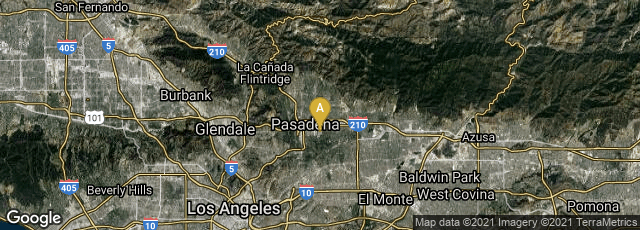

A: Pasadena, California, United States
At the Hixon Symposium in Pasadena, California on September 20, 1948 John von Neumann spoke on The General and Logical Theory of Automata. Within this speech von Neumann compared the functions of genes to self-reproducing automata. This was the first of a series of five works (some posthumous) in which von Neumann attempted to develop a precise mathematical theory allowing comparison of computers and the human brain.
“For instance, it is quite clear that the instruction I is roughly effecting the functions of a gene. It is also clear that the copying mechanism B performs the fundamental act of reproduction, the duplication of the genetic material, which is clearly the fundamental operation in the multiplication of living cells. It is also easy to see how arbitrary alterations of the system E, and in particular of I, can exhibit certain typical traits which appear in connection with mutation, which is lethality as a rule, but with a possibility of continuing reproduction with a modification of traits.” (pp. 30-31).
Molecular biologist Sydney Brenner read this brief discussion of the gene within the context of information in the proceedings of the Hixon Symposium, published in 1951. Later he wrote about in his autobiography:
“The brilliant part of this paper in the Hixon Symposium is his description of what it takes to make a self-reproducing machine. Von Neumann shows that you have to have a mechanism not only of copying the machine, but of copying the information that specifies the machine. So he divided the machine--the automaton as he called it--into three components; the functional part of the automaton, a decoding section which actually takes a tape, reads the instructions and builds the automaton; and a device that takes a copy of this tape and inserts it into the new automaton. . . . I think that because of the cultural differences between most biologists on the one hand, and physicists and mathematicians on the other, it had absolutely no impact at all. Of course I wasn’t smart enough to really see then that this is what DNA and the genetic code was all about. And it is one of the ironies of this entire field that were you to write a history of ideas in the whole of DNA, simply from the documented information as it exists in the literature--that is, a kind of Hegelian history of ideas--you would certainly say that Watson and Crick depended upon von Neumann, because von Neumann essentially tells you how it’s done. But of course no one knew anything about the other. It’s a great paradox to me that in fact this connection was not seen” (Brenner, My Life, 33-36).